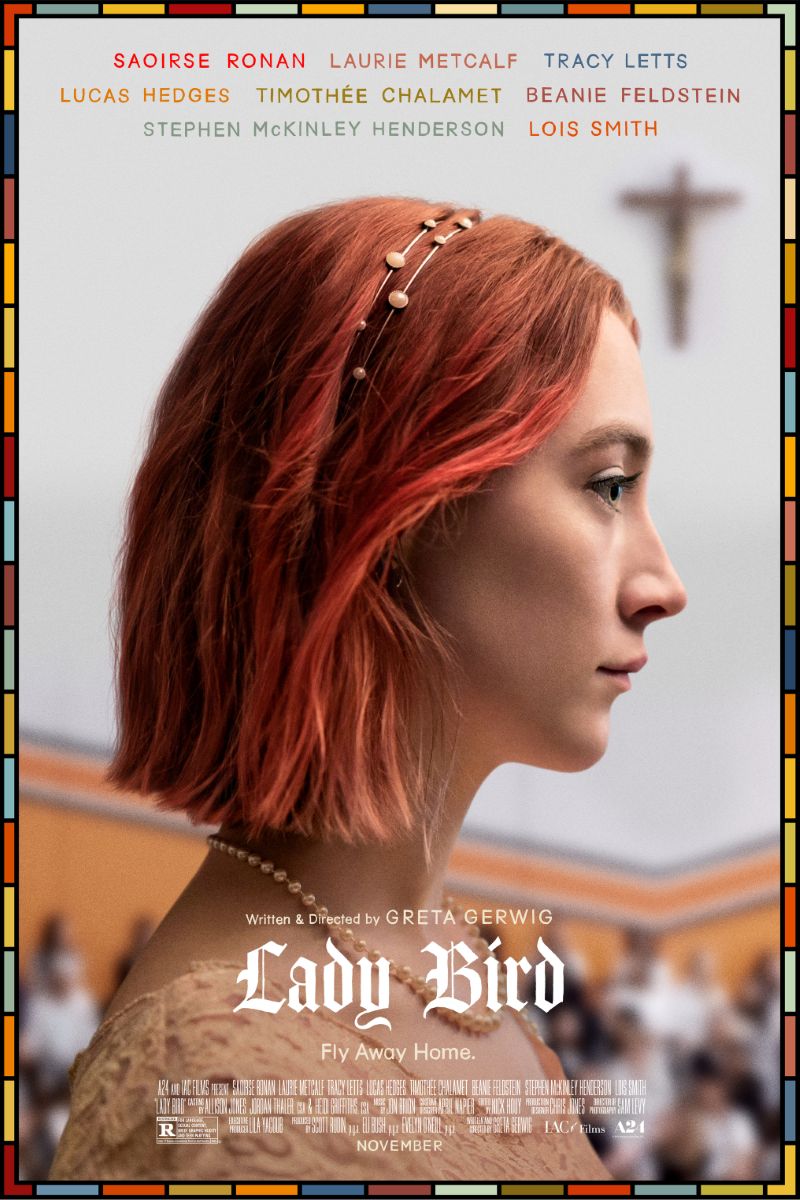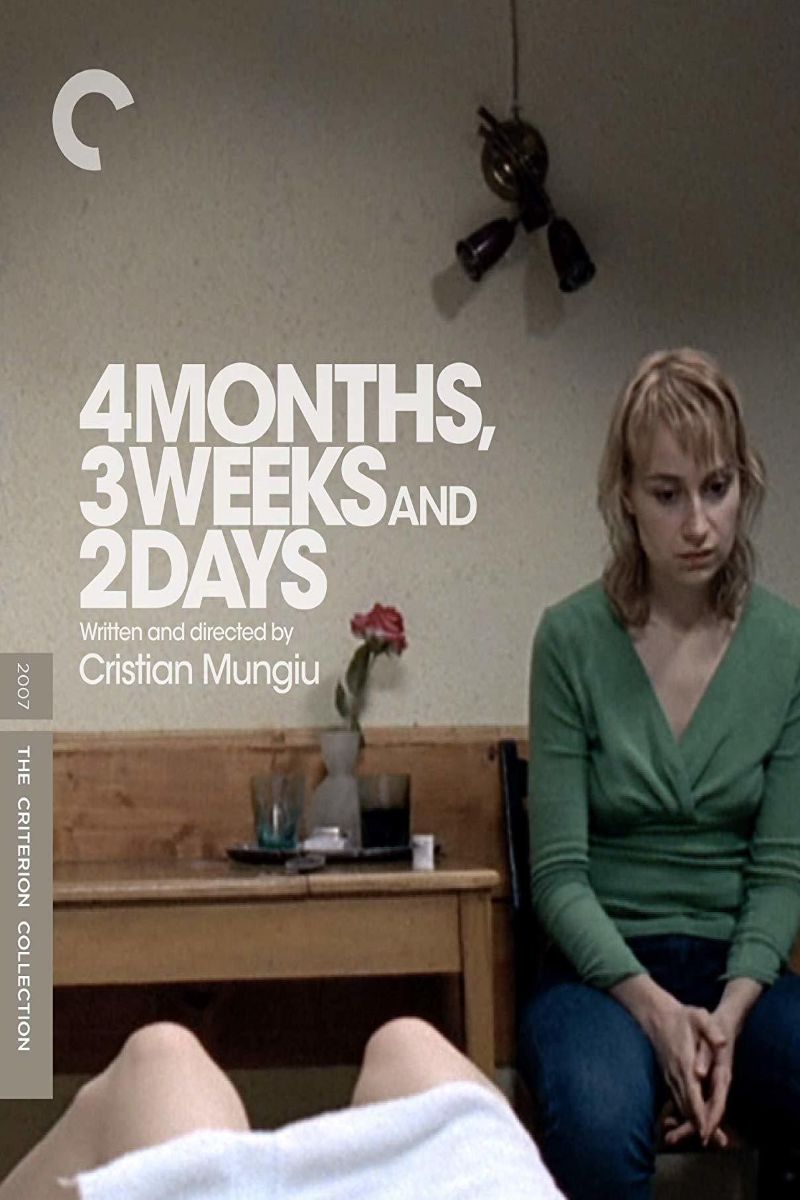
Lady Bird
Lady Bird
Greta Gerwig's directorial debut, a coming-of-age film about high school student Christine (who calls herself Lady Bird) and her complex relationship with her mother, as well as her teenage confusion and growth in pursuing independence and self-identity.
Cast
🎥 Film Analysis & Review
Greta Gerwig’s directorial debut “Lady Bird” is a seemingly ordinary yet profound coming-of-age film that depicts a 17-year-old girl’s inner world with delicate and authentic touches, while deeply exploring mother-daughter relationships, class consciousness, and the various challenges young women face in seeking independence. The significance of this film lies not only in its artistic achievement but also in providing a new paradigm for female coming-of-age narratives.
The Complexity of Mother-Daughter Dynamics
The film’s most striking aspect is its precise portrayal of the complexity of mother-daughter relationships. The relationship between Marion and Christine is filled with the tension of love and conflict, with every argument containing deep emotional connection. Marion, as a nurse bearing the family’s economic burden, has strict requirements for her daughter stemming from her profound understanding of real life and concern for her daughter’s future. Christine’s rebellion represents the younger generation’s desire for autonomy and self-realization. This complex mother-daughter dynamic reflects the eternal tension within feminism between tradition and progress, pragmatism and idealism.
The film avoids the trap of vilifying either character. Marion’s criticism of her daughter’s choices stems from lived experience with economic hardship and genuine concern for Christine’s future welfare. Her sharp tongue masks deep vulnerability about her family’s financial situation and her own limitations. Similarly, Christine’s self-centeredness and ingratitude are presented as natural aspects of adolescent development rather than character flaws requiring moral judgment.
Economic Class as Narrative Driver
Economic class in the film is not background but an important force driving plot development. Christine attends a private Catholic school, placing her in an awkward position—neither belonging to wealthy families’ circles nor, due to her educational environment, maintaining distance from the working class. Her envy of Julie’s family’s wealthy lifestyle and shame about her own family’s economic situation authentically reflect the psychological impact of class mobility on young women. Gerwig skillfully demonstrates how economic pressure influences women’s choices and self-perception.
The film’s handling of class anxiety is particularly nuanced. Christine’s family lives in what her mother calls “the wrong side of the tracks,” and this geographic marginality becomes a metaphor for their social position. When Christine lies about her address to potential romantic interests or feels embarrassed about her family’s modest home, the film illustrates how class shame can distort young women’s relationships and self-understanding.
Catholic Education and Gender Norms
The film’s portrayal of the Catholic educational environment is fascinating. In this relatively conservative setting, Christine’s rebellious spirit appears particularly prominent. She changes her name to “Lady Bird,” dyes her hair, pursues boys—all behaviors challenging traditional gender norms. However, the film doesn’t simply portray religious education as oppressive but demonstrates its complexity—the nuns have both strict sides and understanding, supportive sides.
The character of Sister Sarah Joan (Lois Smith) exemplifies this complexity. While maintaining institutional authority, she also provides Christine with genuine intellectual engagement and encouragement. This portrayal avoids stereotypes about religious education while acknowledging how institutional settings can both constrain and nurture young women’s development.
Sexuality and Bodily Autonomy
Sexuality and bodily autonomy are important issues the film addresses. Christine’s first sexual experience is neither romantic nor traumatic but filled with realistic complexity. The film’s handling of this is very mature, neither idealizing nor demonizing sex but presenting it as a natural part of the growth process. This approach challenges traditional film stereotypes about young women’s sexual experiences.
Christine’s sexual relationships with both Danny and Kyle serve different narrative functions while avoiding exploitation or sensationalism. Her discovery of Danny’s sexuality complicates her understanding of romantic relationships, while her encounter with Kyle teaches her about the gap between expectation and reality. These experiences contribute to her emotional education without defining her character through sexual experience alone.
Female Friendship and Social Pressure
Friendship occupies an important position in the film, particularly Christine’s friendship with Julie. Their relationship demonstrates the complexity of female friendship—both deep emotional connection and jealousy and betrayal. When Christine distances herself from Julie to fit in with the “cool girls” group, the film reveals how social pressure affects relationships between women. Ultimately, Christine realizes that genuine friendship is more important than social status, which is an important lesson in her growth process.
The film’s portrayal of female social dynamics avoids simple moral lessons while illustrating how class anxiety and social ambition can damage authentic relationships. Christine’s temporary abandonment of Julie reflects broader patterns of how women are often forced to compete for limited social resources rather than building solidarity.
Education and Class Mobility
Education and class mobility represent another important theme. Christine’s desire to attend college in New York is not only geographical transfer but a symbol of class ascension. However, the film suggests that while education can provide opportunities, it cannot completely eliminate class differences. Even at university in New York, Christine still needs to face issues of her background and identity.
The film’s treatment of higher education as both opportunity and challenge reflects contemporary realities about student debt, cultural capital, and the persistent influence of family background on individual opportunities. Christine’s college experience promises transformation while acknowledging that personal growth involves integrating rather than rejecting one’s origins.
Place and Identity Formation
Gerwig’s portrayal of Sacramento is filled with complex emotions. Christine initially feels disgust toward her hometown, considering it ordinary and boring, but over time, she begins to understand the city’s meaning for her. At the film’s end, when Christine is in New York, she re-examines her relationship with her hometown. This process of growth and understanding is an important marker of female maturity.
The film’s meditation on place and belonging resonates with broader questions about how geography shapes identity, particularly for young women seeking to expand their horizons while maintaining connections to family and community. Sacramento becomes both the place Christine wants to escape and the foundation that shapes her values and character.
Performance Excellence
The film’s performances are near-perfect. Saoirse Ronan portrays Christine’s complexity thoroughly, displaying both her selfishness and immaturity while revealing her kindness and vulnerability. Laurie Metcalf’s portrayal of mother Marion is even more impressive, carving a strong and complex female image with remarkable depth.
Ronan’s performance particularly excels in capturing adolescent self-contradiction—Christine can be cruel to her mother while genuinely loving her, ambitious about her future while naive about its challenges. This authenticity in character portrayal contributes significantly to the film’s emotional impact.
Avoiding Coming-of-Age Clichés
“Lady Bird’s” success lies in avoiding common coming-of-age film traps. It neither overly romanticizes adolescence nor portrays adults as villains. Instead, it demonstrates the authentic complexity of growth and the different challenges women of different ages face. The film tells us that growth is not a linear process but a complex journey filled with contradictions, confusion, and discovery.
The film’s structure reflects this non-linear understanding of growth. Rather than following a simple arc from immaturity to wisdom, Christine’s journey involves cycles of understanding and confusion, connection and isolation, recognition and denial. This approach better reflects the actual experience of coming-of-age.
Contemporary Feminist Cinema
In the context of contemporary feminist cinema, “Lady Bird” provides new narrative possibilities. It proves that women’s daily lives and inner worlds equally deserve serious treatment and deep exploration. The film lacks grand political declarations, but through an ordinary girl’s coming-of-age story, it touches on social issues across multiple levels including gender, class, education, and family.
The film’s feminist sensibility emerges through its attention to female experience rather than explicit political messaging. By centering a young woman’s perspective and treating her concerns with seriousness, the film validates female experience while acknowledging its complexity.
Economic Realities and Family Sacrifice
The film’s attention to economic pressure provides important context for understanding family dynamics and individual choices. Marion’s double shifts as a nurse, Larry’s struggle with depression and employment, and the family’s financial anxiety all influence Christine’s opportunities and relationships. Rather than treating economic hardship as simple background, the film shows how financial stress affects family communication and individual self-esteem.
Christine’s gradual recognition of her parents’ sacrifices represents an important aspect of her maturation. Her initial obliviousness to financial constraints gives way to understanding of how much her parents have given to provide her with educational opportunities they never had.
The Power of Ordinary Moments
“Lady Bird” finds profound meaning in seemingly mundane experiences—shopping trips with mother, conversations with friends, school performances, and family dinners. This attention to everyday life reflects feminist cinema’s commitment to valuing women’s domestic and social experiences as worthy of artistic attention.
The film’s focus on ordinary moments also challenges cinematic conventions that prioritize dramatic action over character development. By treating Christine’s internal growth as inherently interesting, the film expands possibilities for stories centered on young women’s experiences.
Conclusion
Ultimately, “Lady Bird” conveys a message about understanding and forgiveness. Christine finally understands her mother’s love and sacrifice while beginning to recognize the consequences of her own behavior. This process of growth and self-recognition is an important component of the self-empowerment emphasized by feminism. The film tells us that true independence is not rejecting all connections but making one’s own choices based on understanding and acceptance.
The film’s lasting impact lies in its demonstration that coming-of-age stories can be both specific to female experience and universally relatable. Through its authentic portrayal of family relationships, class dynamics, and personal growth, “Lady Bird” creates space for more diverse and complex representations of young women’s lives in cinema.
Most importantly, the film suggests that maturity involves not the rejection of one’s origins but their integration into a more complete understanding of self. Christine’s journey from Sacramento to New York and back—emotionally if not physically—represents the kind of cyclical growth that characterizes authentic self-development. In learning to appreciate both her mother’s love and her hometown’s value, Christine discovers that identity formation requires neither complete rebellion nor total conformity, but the ongoing negotiation between individual desires and collective belonging.
🏆 Awards & Recognition
- • 90th Academy Awards Best Picture Nomination
- • 75th Golden Globe Awards Best Motion Picture – Musical or Comedy
- • 71st British Academy Film Awards Best Actress Nomination
⭐ Ratings & Links
Related Recommendations
Comments & Discussion
Discuss this video with other viewers
Join the Discussion
Discuss this video with other viewers
Loading comments...



